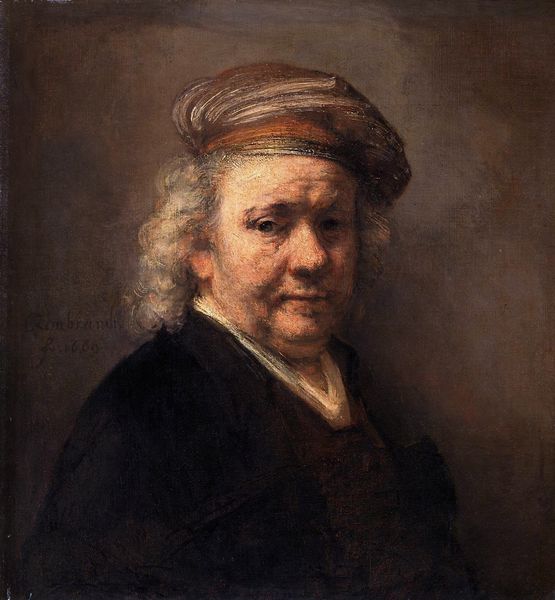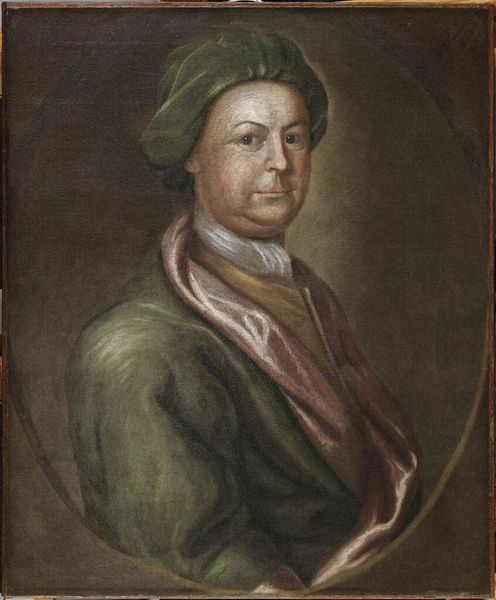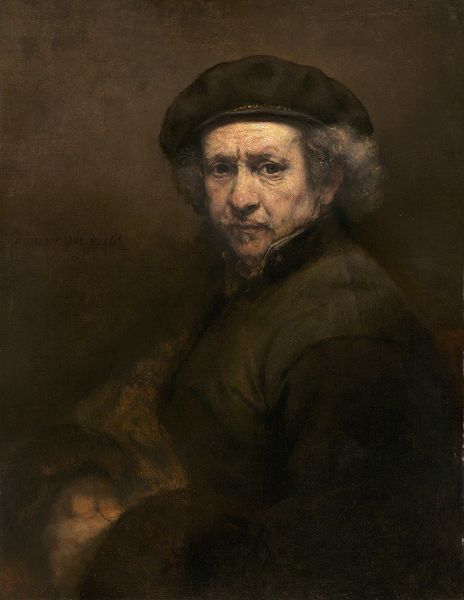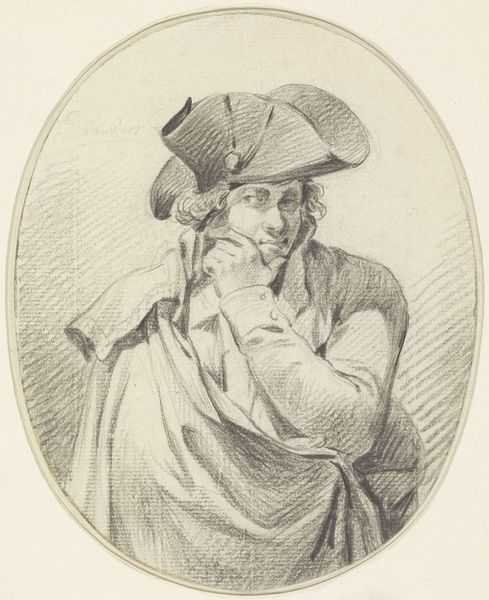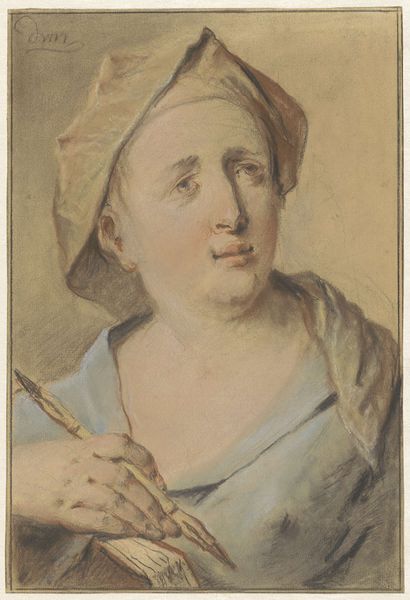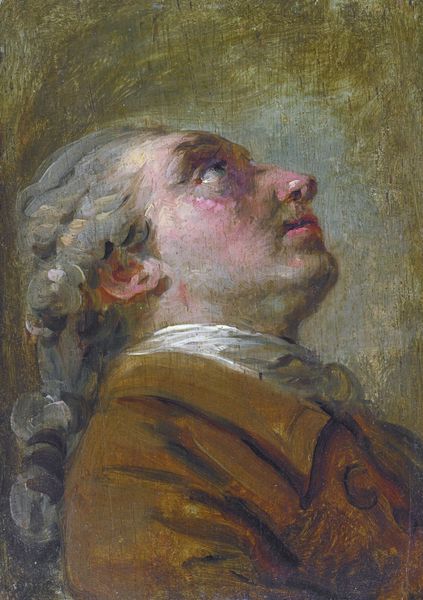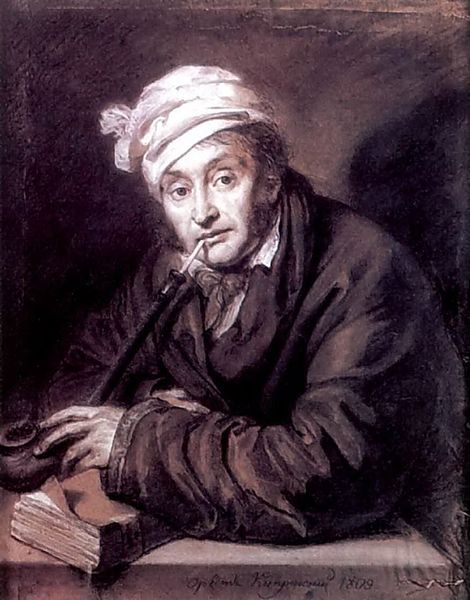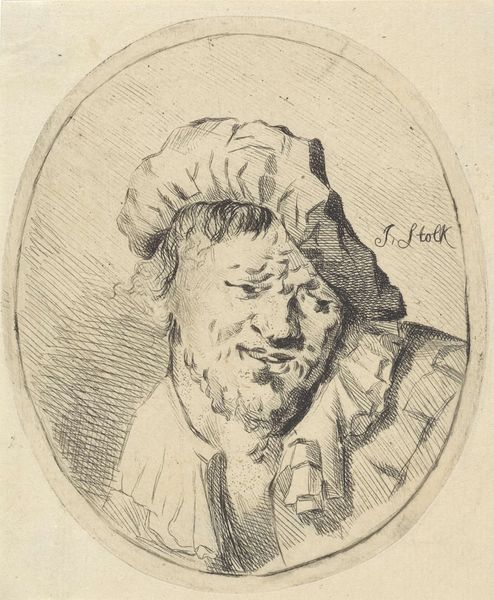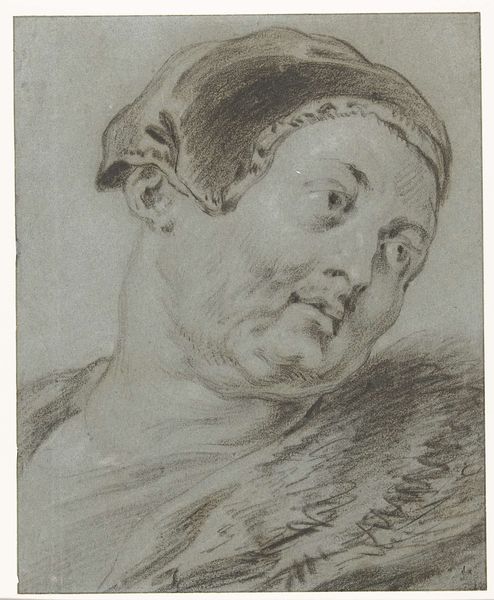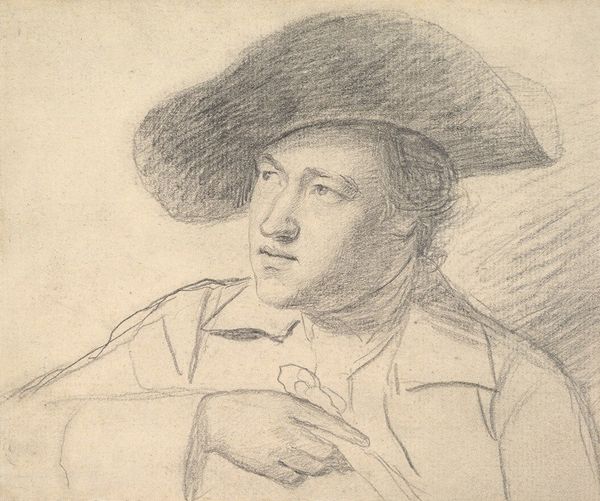
Dimensions: support: 314 x 254 mm
Copyright: CC-BY-NC-ND 4.0 DEED, Photo: Tate
Editor: Here we have John Hamilton Mortimer's Self-Portrait, from the Tate Collections. It's a small painting, intimate almost. What strikes me is his intense gaze – what can you tell us about how this portrait fits into the art world of its time? Curator: Well, self-portraits in the late 18th century were often about constructing a particular public persona. Mortimer, positioning himself with the tools of the artist visible through implication, asserts his intellectual status within the art world. What does his gaze suggest to you? Editor: Perhaps a challenge to the viewer, a claim to artistic authority? I hadn't considered the public performance aspect so directly. Curator: Precisely. It's a strategic self-representation, playing with the rising status of the artist in society. Food for thought, isn't it? Editor: Definitely. It’s fascinating to think about how artists use self-portraits to shape their public image.
Comments
Join the conversation
Join millions of artists and users on Artera today and experience the ultimate creative platform.
tate 8 months ago
⋮
Mortimer was most famous for his scenes of romantic outlaws (‘banditti’). He was also notorious for his dissolute lifestyle and was known as ‘the English Salvator’: a reference to the famous seventeenth-century Neapolitan painter of such themes, Salvator Rosa. According to legend, Salvator himself lived as an outlaw. This is a copy by an unknown artist of a self-portrait by Mortimer. The image prompted a nineteenth-century commentator to write that Mortimer ‘was fond of the wild, the savage, and the wonderful; and it was his pleasure in the fine picture before us to imagine himself a chief of banditti’. Gallery label, August 2004
